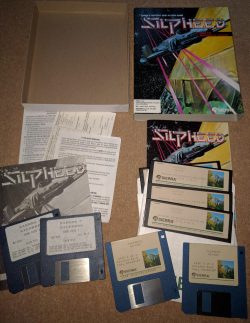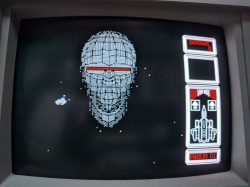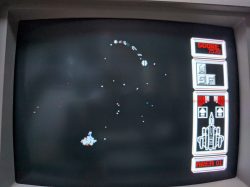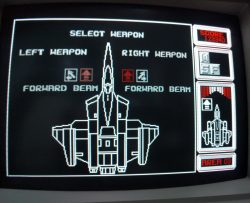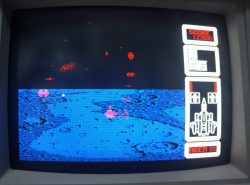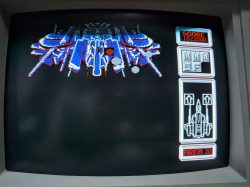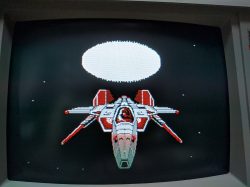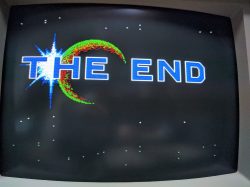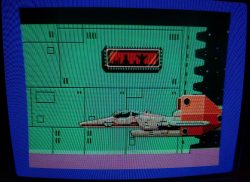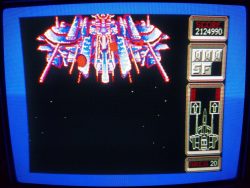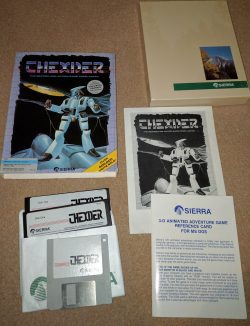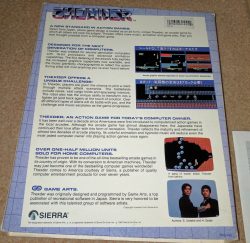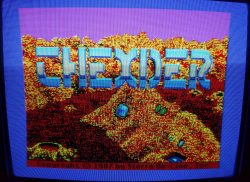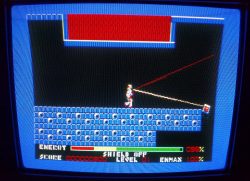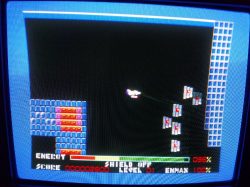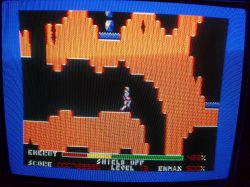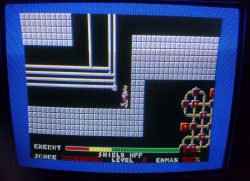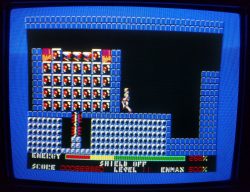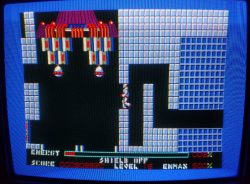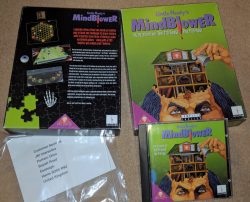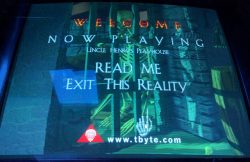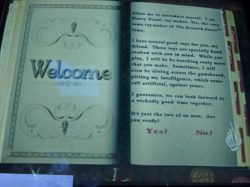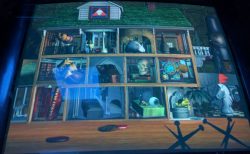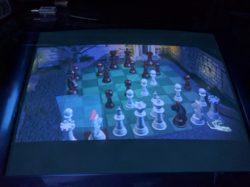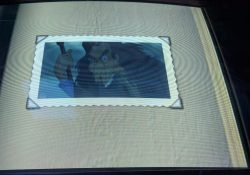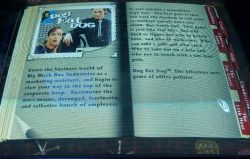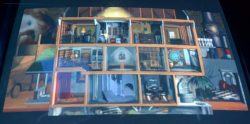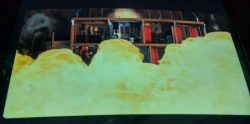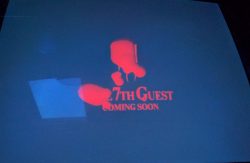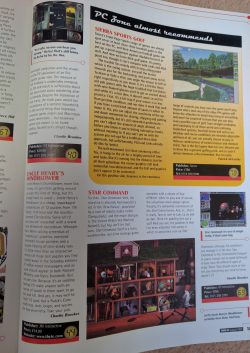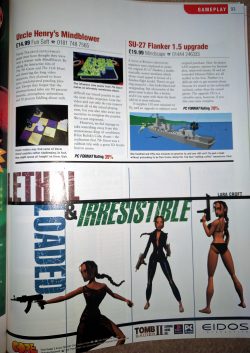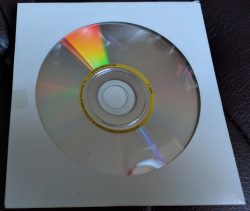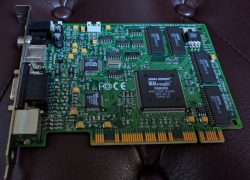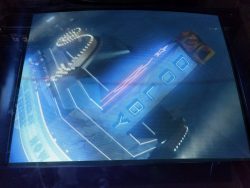Silpheed was the second Game Arts release to be brought over to DOS by Sierra coming out in 1989. It’s a shoot em up consisting of 20 levels of 3D-ish arcade space shooting action. As with Thexder, it originally came out for the PC-8801 a few years earlier before Sierra got the rights to port it. It’s a game I already know well enough, just like 아인카지노, but I wanted to try it out on the Tandy anyway.
There is the usual quality Sierra box art even if the version of the game I have is the cheaper re-release. I do have some of the innards of the original release on the right with the more colourful disks and manual.
The manual does actually tell you the story this time but it’s about as generic as they get. The evil bad guy, Xacalite, has stolen a super powerful spaceship called Gloire and will use it to destroy civilisation as we know it unless you fly a prototype spaceship to stop him. It’s a SHMUP, how much plot do you need anyway?
The game starts will some utterly incomprehensible speech through the PC speaker as the villain of the piece presents himself as a giant disembodied head. This speech is not improved in the slightest on the Tandy. Later versions would add much-needed subtitles which I didn’t have here. It’s so bad I would imagine early players may well have not realised it was sampled speech in the first place.
The graphics at least are presented well enough in Tandy mode looking barely any different from what I’m used to playing in MCGA. Silpheed is a sort of vertically scrolling shooter but with the axis tilted to give a 3D effect, similar to Mode 7 on the SNES. It’s not especially smooth but the graphics were decent in their day and the sprites all scale as they move around.
Where Silpheed has always stood out for me, is the excellent music which translated brilliantly to all of the early PC soundcards. On the Tandy, it’s still not bad for what it is although it does lose much of the impact. The shooting is still PC speaker beeps but at least it’s more consistent with the music playing it this way.
The gameplay is straightforward enough. There are a handful of powerups in the levels which can be used to speed up, auto fire, create a barrier to enemy fire or power up your weapons. Silpheed is equipped with a shield which ticks down one notch at a time when you get hit. Once it’s gone, the next two hits will damage one of your subsystems (weapon or engine) and after the third it’s game over. Thankfully, all versions allow the player to restart from the last level played making Silpheed far less hardcore a game than Thexder. In fact, it’s quite an easy shooter as these things go and I can easily play through most of it normally.
Every 50,000 points gets you a new weapon to pick from before beginning the next level. The only ones I ever really use given the choice are the automatic aim particle guns and the forward firing lasers which are useful in the fortress levels and final level of the game.
There are about 30 enemy types that come in a wave at a time in predefined patterns + several types of boss ship at the end of each of the levels. You really don’t need to memorise the patterns in this game as it’s quite forgiving and the patterns such as they are, get reused for the various enemy types. The Tandy version can be a little harder though, especially on the planet missions as the colour scheme goes an eyestraining red and blue making it difficult to pick anything out. I gather that they didn’t use the white as there are some graphical tricks going on to speed everything up.
I did a DOSBox longplay of this on YouTube years back (part one of which is above) for anyone wanting to see the whole game. Silpheed is still fun but I can’t say it’s anything too special. The main thing it has going for it over other shooters are it’s accessibility (ironic given how tough Thexder was), and the awesome soundtrack on the MT-32. This was one of the first games I remember playing on a SoundBlaster and after many years of nothing but beeping speakers it blew me away. When I eventually got an MT-32, it only got better still.
The Tandy does it’s best but Silpheed doesn’t have quite the same appeal when the music is coming through a 3 channel PC speaker set up. It didn’t seem to run quite as well either and I actually struggled to finish the last level. I didn’t ever seem to have any chance to dodge the lasers on the last boss. Booting with the CPU at the slower speed solved this ultimately but kind of feels like cheating. I have no idea what the target CPU was.
While I was at it, I had a quick blast through the IIGS port. This is considerably more colourful and has music nearly matching the MT-32 without the need for any extra hardware. Where it suffers is a complete lack of planet graphics and it’s really slow (much slower than the slowed down Tandy was). This port is also particularly easy due to a ridiculously high refire rate. You can blast through some levels just by sitting in the front middle of the screen holding down the fire button. It also lacked all the ending graphics when I beat it but the rest of the cutscenes were there.
I still like Silpheed but I can’t really recommend it as there are just so many better options available. The soundtrack is what keeps me coming back and the game is easy enough to not outstay its welcome without ever offering all that much challenge. The FMV packed Mega-CD version looks like it would be more up my street but I’ll leave that for another day.
A game that is offering me a challenge is Thexder 2, which I’m about halfway through. Should I ever finish it, that will probably be coming up next.

